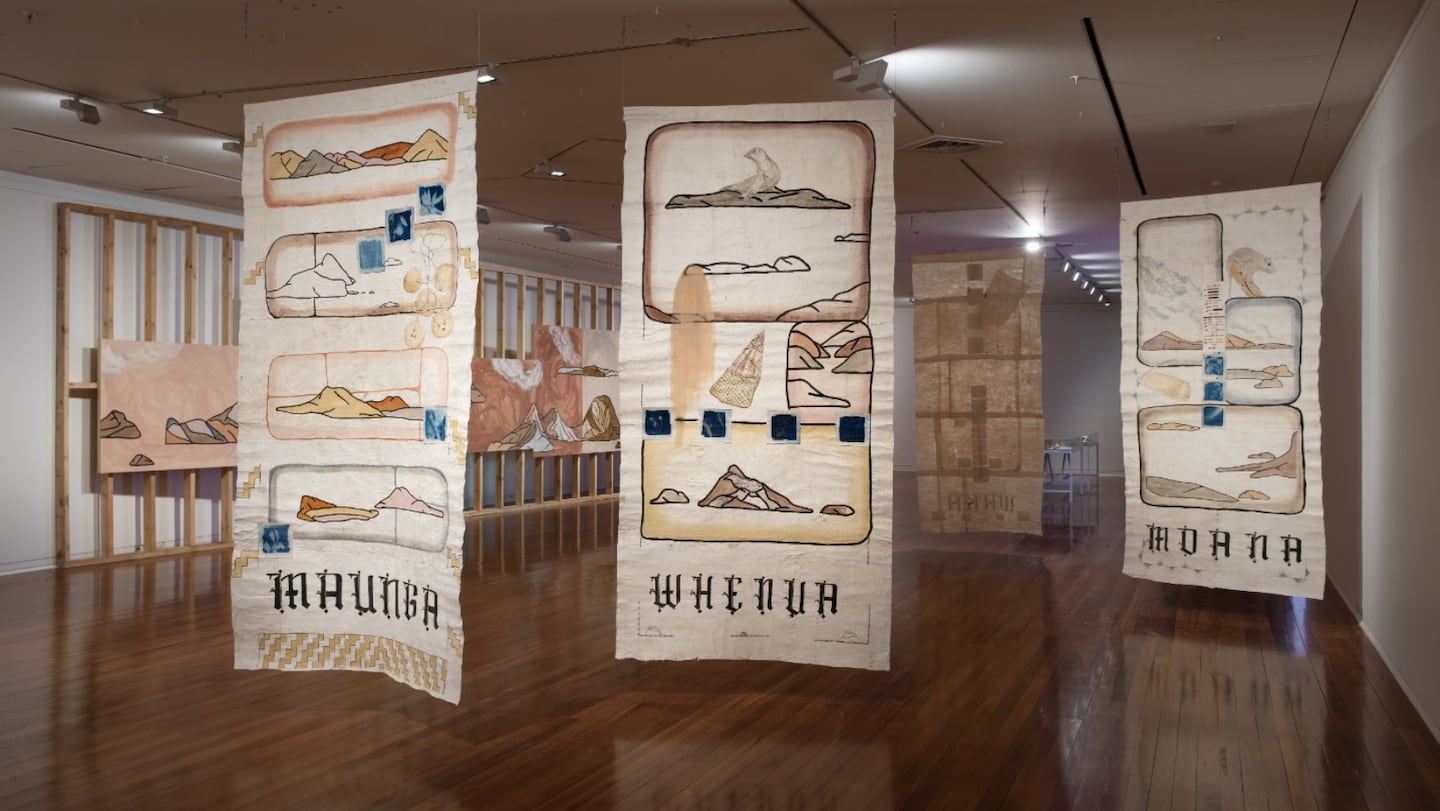She took a two-week voyage to redraw landmarks of Aotearoa from what she thought Tupaia, a Polynesian high priest and his young apprentice, Taiata, would have seen over 250 years ago on the Endeavour with Captain Cook.
Multidisciplinary artist Cora-Allan Lakaifi Twiss (Ngāpuhi, Ngāti Tumutumu, Niue – Liku, Alofi) is now displaying her art on hiapo (tapa cloth) at the Christchurch Art Gallery.
It’s called Encountering Aotearoa and it was inspired by a two-week expedition on the Heritage Adventurer she went on.
Lakaifi Twiss used whenua-pigment (natural resources) on hiapo to capture the landscapes of Aotearoa from the moana without colonial buildings from Dusky Sounds (Southland) to Ipipiri (Northland).
“In regards to their time, the manu would have been so loud, the call of the manu, thekekeno would have been everywhere, the wildlife would have been more a part of that experience and I didn’t have that experience (growing up).
“So when I was seeing all these beautiful whenua colours on the cliffs and the slips and the trees there was this sense of missing from this kind of spot and being able to encounter a 2023 space.”

Lakaifi Twiss is a maker of the hiapo and learnt her trade through her father’s Niue ancestral roots and has been doing this for over five years.
Combined with resources from the land in her stops on the voyage she drew mauga and main plantain on the areas on the hiapo.
She says it reminds her of her Māori-Niue duality and the connection Māori have with the Pacific.
In her exhibition in Christchurch starting this Friday, her main displays will be a Tino Rangatiratanga flag painted on a piece of hiapo alongside a painting inspired by the late Ralph Hotere who once made one brush stroke go 11 yards (10m).
“It was overwhelming (the voyage) and that’s why I painted a 17.6m painting that’s all whenua paint, kawhia, so kauri, gum ink on the work.
“It pushed me and stretched all my sketches from that time onto this long beautiful landscape.”

Encountering Aotearoa looks at the work of Lakaifi Twiss, who studied the artists and plant experts who were on the first trip of the ship of the Endeavour to Aotearoa in 1769.
However, she says her artwork is a reply to the coalition government after the disestablishment of Te Aka Whai Ora and continuous job cuts across the public sector that affect Māori and the Pacific.
Putting her energy into expressing her art form is her way of protesting.
“The whenua for me - I feel like I have to hold on tighter, I feel I have to know my mātauranga Māori just that extra bit stronger and really be unmoving and unwavering with how I am and how proud I am to be Māori, to be Niue.
“So, the show itself is more reflective on those spaces because that’s what’s being pulled out of me right now.”

Her show runs until August 25 before it heads to Waitangi Treaty Grounds in November.
After she opens her show in Christchurch she’ll head over to museums in Harvard, Massachusetts, Denver and Chicago to learn about their preservation of certain hiapo.
She says it’s all about learning, so she can pass on as much knowledge to rangatahi as her two sons.
“I just want to develop for myself, work on the language being Māori and Niue it is such a different space. We work in a way of duality but there are multitudes because our whakapapa goes on behind us and in front of us.
“It’s something I really want to look into because want to look into doing a PHd and visiting archives around the world.”



